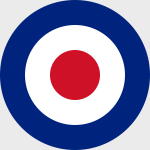Corgi AA39001 Royal Army Air Corps Westland Lynx Mk.8 Helicopter - 16 Air Assault Brigade, AAC Dishforth, England, 2008 (1:72 Scale)
"Obsolete weapons do not deter."
- British Prime Minister Margaret Thatcher
 The Westland Lynx is a British helicopter designed by and built Westland Helicopters at its factory in Yeovil. Originally intended as a utility craft for both civil and naval usage, military interest led to the development of both battlefield and naval variants, which went into operational usage in 1977 and were later adopted by the armed forces of over a dozen nations, where it primarily serves in the battlefield utility, search and rescue and anti-submarine warfare roles. The helicopter is now produced and marketed by AgustaWestland.
The Westland Lynx is a British helicopter designed by and built Westland Helicopters at its factory in Yeovil. Originally intended as a utility craft for both civil and naval usage, military interest led to the development of both battlefield and naval variants, which went into operational usage in 1977 and were later adopted by the armed forces of over a dozen nations, where it primarily serves in the battlefield utility, search and rescue and anti-submarine warfare roles. The helicopter is now produced and marketed by AgustaWestland.
The initial design (then known as the Westland WG.13) was started in the mid-1960s as a replacement for the Westland Scout and Wasp, and a more advanced alternative to the UH-1 Iroquois. As part of the Anglo-French helicopter agreement signed in February 1967, the French company Aerospatiale were given a work share in the manufacturing programme. Aerospatiale received 30% of production with Westland performing the remainder. It was intended that France would buy Lynxes for its Navy and as an armed reconnaissance helicopter for the French Army, with Britain buying Aerospatiale Gazelles and Pumas for its armed forces. The French Army cancelled its requirement for Lynxes in October 1969.
The Lynx design used many components derived from the Scout and Wasp. However, the rotor was new, being of a semi-rigid design with honeycomb sandwich blades. The first Lynx prototype took its maiden flight on March 21st, 1971.
In 1972, a Lynx broke the world record over 15 and 25 km by flying at 321.74 km/h (199.92 mph). It also set a new 100 km closed circuit record shortly afterwards, flying at 318.504 km/h (197.91 mph). In 1986, a Lynx specially modified with BERP (British Experimental Rotor Programme) rotor blades, registered G-LYNX and piloted by Trevor Egginton set an absolute speed record for helicopters over a 15 and 25 km course by reaching 400.87 km/h (249.09 mph).
Over 100 Lynxes were ordered by the British Army as Lynx AH (Army Helicopter) Mk.1 for different roles, such as transport, armed escort, anti-tank warfare (with eight TOW missiles), reconnaissance and evacuation. The Army has fitted a Marconi Elliot AFCS system onto the Lynx for automatic stabilisation on three axis. Deliveries of production Lynxes began in 1977.
Pictured here is a 1:72 scale replica of a Royal Army Air Corps Westland Lynx Mk.8 helicopter assigned to the 16 Air Assault Brigade, AAC which was deployed to Dishforth, England, during 2008.
Sold Out!
Dimensions:
Rotor Span: 6-1/2-inches
Length: 7-inches
Release Date: May 2010
Historical Account: "Air Assault" - 16 Air Assault Brigade is a formation of the British Army. It was formed as part of the defence reforms implemented by the Strategic Defence Review on September 1st, 1999, by the merging of 24 Airmobile Brigade and elements of 5th Airborne Brigade. This grouping created a highly mobile brigade of parachute units and airmobile units which employ helicopters.
The numeral 16 was chosen to perpetuate the 16th Parachute Brigade which had itself been numbered in honour of the 1st Airborne Division and 6th Airborne Division of World War II.
The brigade's sign is that of a light-blue and maroon shield with a light blue striking eagle outlined in maroon emblazoned on it, intended to represent its offensive role. The sign is worn on the left arm. The colours chosen are traditional and show the make-up of the brigade, maroon for Airborne and light-blue for Army Air Corps. The symbol of 5 Airborne Brigade had been Bellerophon on top of Pegasus (a winged horse of Greek mythology) which became synonymous with the airborne forces thanks to their exploits during World War II. There was some controversy when the Parachute units of 5 Airborne had to give up the symbol and replace it with 16 Air Assault's symbol.





![USAF Lockheed-Martin F-22A Raptor Air Dominance Fighter - 04-4065, 422nd Test and Evaluation Squadron, 53d Test and Evaluation Group, Nellis Air Force Base, Nevada, November 2021 [Chrome Reflective Coating] (1:72 Scale)](http://cdn4.volusion.store/qh9e9-jdqv9/v/vspfiles/photos/HA2823-1.jpg?v-cache=1740197136)
![Japanese Air Self-Defense Force Mitsubishi F-15J Eagle Multi-Role Fighter - 02-8801, Air Development and Test Wing [Low-Vis Scheme] (1:72 Scale)](http://cdn4.volusion.store/qh9e9-jdqv9/v/vspfiles/photos/HA4515-1.jpg?v-cache=1740197136)


